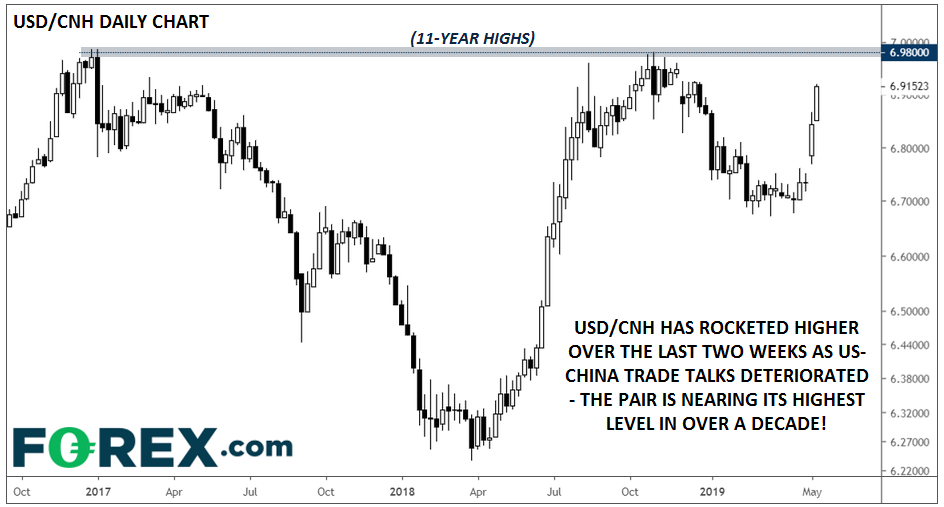Last week, we outlined three trade deal scenarios and their potential impact on the S&P 500, noting that one scenario involved China retaliating to U.S. tariffs “through a combination of its own tariffs, currency devaluation, policy stimulus, and greater restrictions on US companies. A true ‘trade war’ between the planets two largest economies could drive the global economy into recession…” While nothing is official yet, China’s actions and media reports over the weekend suggest that the doomsday scenario is growing increasingly likely, with negative repercussions for investors’ risk appetite.
Monday morning, Beijing stated that it would raise tariffs on $60B of U.S. imports to as high as 25% on June 1. While the Dealmaker-in-Chief will no doubt view this response as weak (especially given the U.S.’s threat to raise tariffs on an additional $325B of Chinese goods), it’s worth noting that China has other levers to pull.
For example, USD/CNH has surged over the last six days, bringing the yuan to near its lowest level against the dollar in a decade. A weaker yuan could help cushion the impact of new U.S. tariffs by making Chinese goods cheaper to overseas consumers. Perhaps most worryingly, state-run media has suggested China may stop purchasing U.S. agricultural products and energy entirely and that Chinese scholars were exploring options to “dump” U.S. treasury holdings.

Source: TradingView, FOREX.com
As my colleague Fawad Razaqzada noted, the first variable to watch for signs of a shift is the tone of policymakers’ comments. It’s been a mere eight days since we went from both sides describing talks as “constructive” and a deal as “close,” to Trump threatening that China will be “hurt very badly” if it doesn’t do a deal and China declaring that it will “never surrender to external pressure.”
For now, USD/CNH looks like it may have a date with 7.00, and as long as trade rhetoric remains incendiary, traders will want to strap in more volatility out of USD/CNH and global markets broadly.
Cheers
